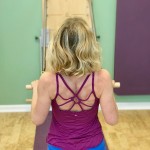Forget That Cue! – Three Wrong Cues for the Shoulder Girdle
by Mara Sievers
August 21, 2019
Guiding your student with your words is a combination of skill and art. Sometimes we overuse cues or apply certain cues to a movement where it’s not appropriate. You might or might not have been told any of these cues. We sometimes just assume that our shoulders have to be away from our ears at all times. After all, you heard it said often enough.
Without much further ado, here are three of the most commonly- used cues that are actually wrong. A reason and alternative will be provided, of course.
1. “As you lift your arms, keep your shoulders away from your ears.”
You might have used this cue in Seated Push Through (Trapeze Table), in Elephant (Reformer), or in any other exercises where you lift your arms overhead.
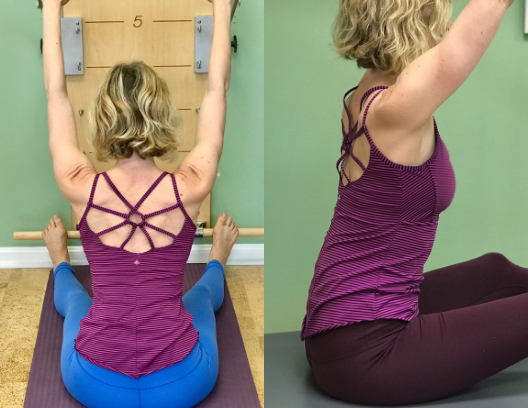
Why this is a bad cue: This cue inhibits upward rotation of the scapula. First a quick recap: The first 30 degrees of lifting your arms happens in your glenohumeral joint, which is the ball and socket joint. At that point, you’ve maxed out the range of movement in that joint. If you’d like to lift your arm higher than 30 degrees your shoulder blade has to rotate upward. That’s because the socket of your glenohumeral joint is located on your shoulder blade. So – if you didn’t allow the shoulder blade to move, you either wouldn’t be able to lift your arms higher than 30 degrees or – more likely – you’d force your upper arm bone against the edge of the shoulder socket which can cause strain or pain (impingement). Further, you probably elevate your scapula to move the shoulder socket a bit higher up. Unfortunately, this is what most of us do on a regular basis.
Cues that help recreate the right pattern can be “”Feel how your mid back gets wider as you lift your arms” (this is due to the inferior angle of the scapula moving laterally during upward rotation). Another way to encourage upward rotation is to “Lift your arms from the bottom tip of your shoulder blades” (mid back). Or “Reach far away as you lift your arms” (elongation is often a short cut to good alignment). You’ll feel your shoulder blades moving away from one another as you reach.
What if your shoulder blades are rotating as they should, but your neck still looks short and there is too little space between your ears and shoulders?
Maybe it’s not elevation of the scapula that’s the problem, but internal rotation of the humerus.
Try this with me: With your arms hanging by your side, turn your palms back and then awkwardly outward to encourage internal rotation of the humerus and now lift your arms overhead. Do you notice how much closer your humeral head is to your ears when your arms are overhead?
Now let’s try it the other way: Turn your palms forward and then outward (you’ll feel like your arm is squeezing against your armpit) and keep turning them in the same direction as you lift your arms overhead. Do you notice that there is much more space between your upper arm and ear at the top? (Do it in front of a mirror so you see the difference clearly.)
WSo when the shoulders look too close to your ears, it doesn’t mean they are too high, they might just be rotated the wrong way.
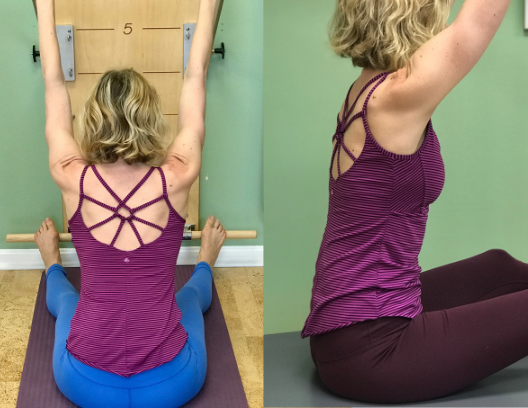
2. “Squeeze your shoulder blades together.”
I bet you’ve used this cue in any number of exercises, such as the Rowing variation in Roll Down or Thigh Stretch/Z on the Trapeze Table, in Pulling Straps or the Kneeling Arms Series (Reformer) or in Hanging Pull ups (Trapeze Table).
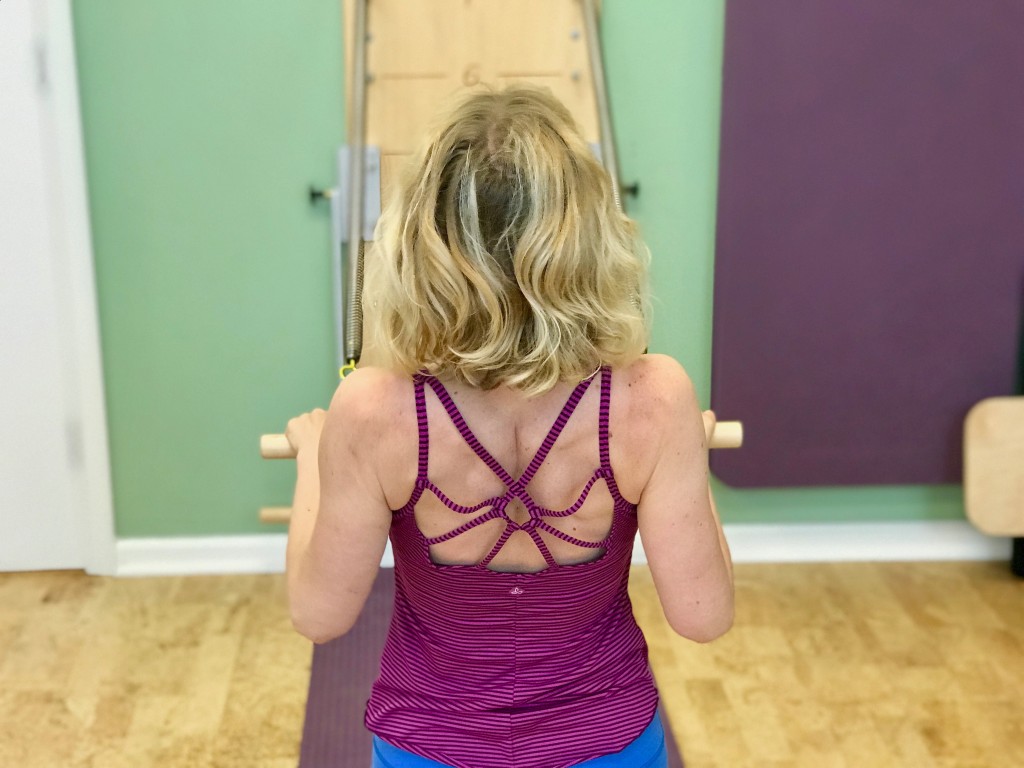
Only if you or your student is kyphotic, meaning the upper back is very round and the shoulder blades are significantly protracted (far away from your spine), is this cue helpful. Many people are already too retracted (shoulder blades sitting very close to the spine). Rhomboids and or middle trapezius are shortened, and serratus anterior (antagonist) is weakened.
The reason why we keep cueing the shoulder blades together is because, for most of us, our shoulder heads (top end of the upper arm bone) are sitting too far forward. The problem, again, is in the muscles that connect the arm bone into the shoulder socket – , your rotator cuff in the back and your pecs major and minor in the front. Due to those muscles being shortened/ or weakened, we often have no other option than to retract. But when your shoulder blades retract, your front ribs open.
To fix that, try to move your shoulder heads back in space, without retracting your scapulae. A good way to try this is by lying prone, such as in Dart. Your chest is touching the mat. Try to lift your shoulder heads one or two inches up away from the mat without squeezing your shoulder blades. Tada! It’s possible! (And why don’t you externally rotate your upper arms – by turning your palms downward – while you’re at it for twice the effect.)
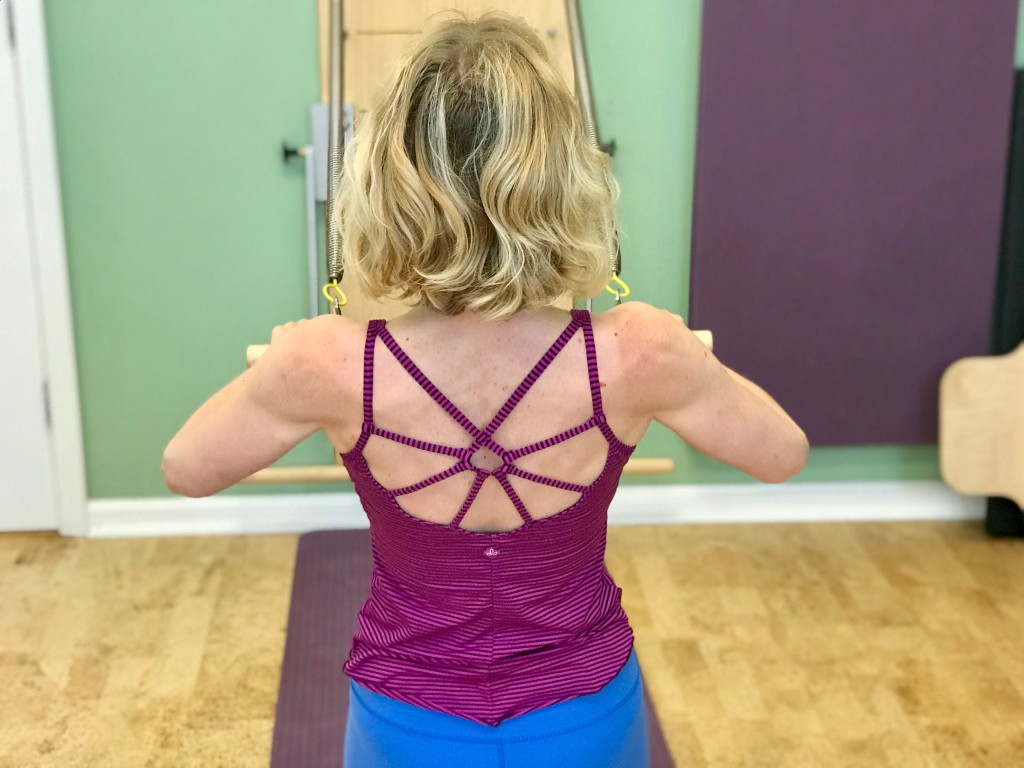
3. “Fingertips to your ears.” “Keep your elbows wide.”
These two cues are often used together, for instance in abdominal work, such as Chest Lift on the mat or Spine Corrector, Lower Lift in the Stomach Series, and the Short Box Series.
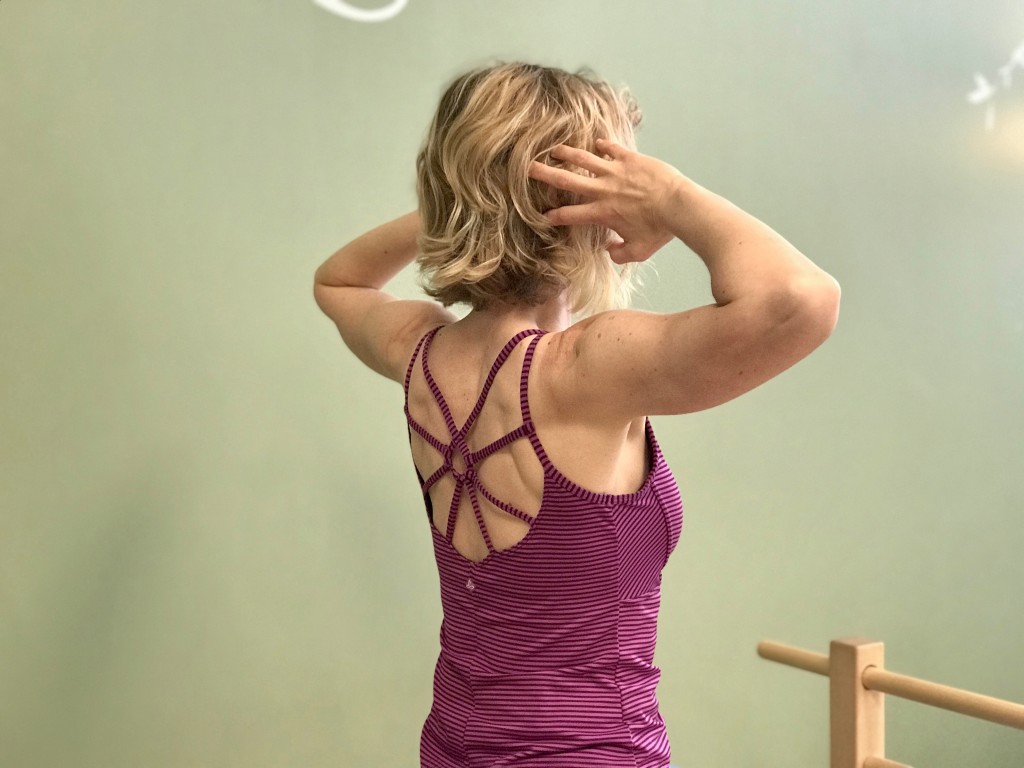
There are two problems here. #Itsatwofer
Most people place their fingertips against the sides of their head, barely touching. This position doesn’t give you any feedback about where your head is in space nor does it help you hold up your heavy head against the force of gravity.
At the same time that your fingertips are touching the sides of the head, we often elevate the scapulae. We think we are supposed to open our elbows wide, which actually causes the upper arms to internally rotate and the humeral head to translate forward in the joint. Now those poor upper traps are super tight and push against the cervical spine. Our head has no other chance than to be too far forward. Man!
Instead, interlace your fingers, fully. Or, nest one palm into the other palm and place them against the back of your head. In this position, your thumbs will be resting near your occipital ridge, a great spot to help you feel where your head is and help with axial length (by gently pressing upwards on the occiput).
Lastly, if you open your elbows wide (to a perfect T) you’re going beyond the range of motion of your glenohumeral joint (look up “scapular plane”) and your shoulder blades will have to retract to allow that to happen, which causes the front ribs to widen and the head gets pushed forward, and your upper traps seize up. Aaaaahh! Nooo.
So, go easy on your neck and shoulders, please! Interlace your hands behind your head. Support the weight of your head with your hands, reach your elbows slightly forward.
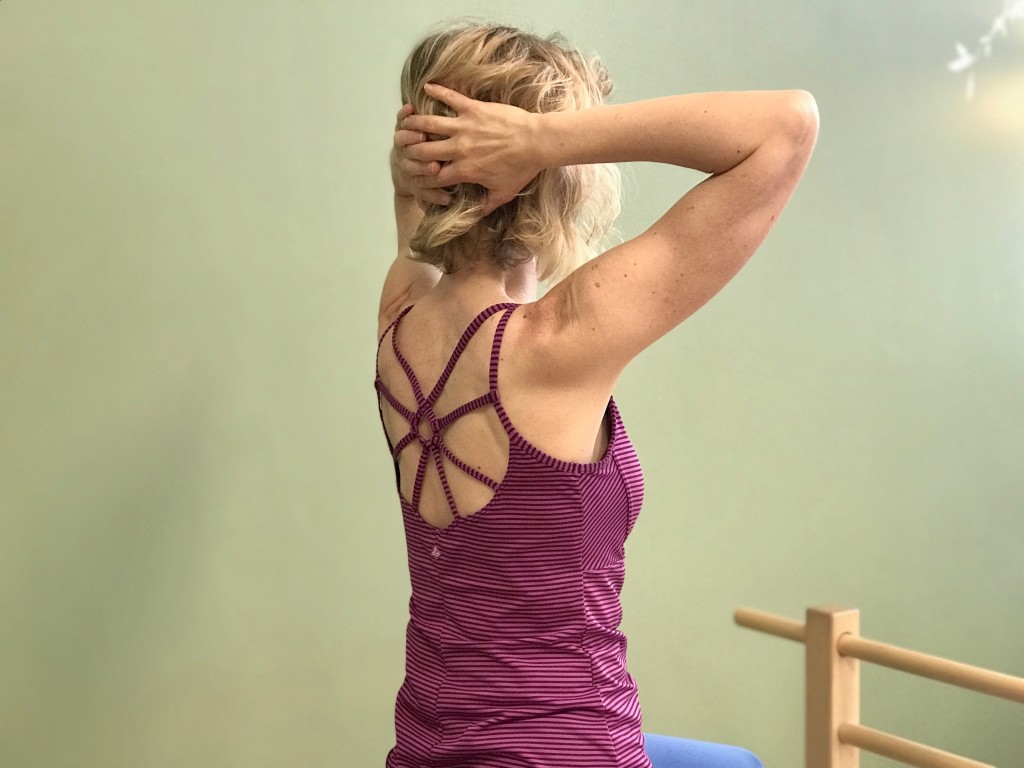
It’ll feel so much easier. Almost not like a workout. Now you’re on to something.
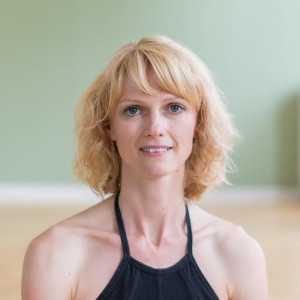 Mara Sievers is the creator of Pilates Encyclopedia and owner of Concord Pilates, a boutique Pilates studio in New Hampshire’s capital. She completed the Polestar Comprehensive Training Series and was certified by the Pilates Method Alliance in 2017. Her whole life seems to be framed by the theme of authenticity and self-discovery. Born in Austria, she initially chose a career in the performing arts. As part of her dance training, she discovered Pilates in 1998 and relied on the method to help her return to health after a dance injury at the age of 22. After her move to the US in 2008, she rerouted her professional desire towards movement instruction, eventually settling on the magical Pilates method. Pilates has been a lifesaver more than once for her personally, and it’s her passion to share the power of Pilates with those who are curious about discovering an easier, more joyful, comfortable, and energetic way of being. She will present at the upcoming annual meeting of the Pilates Method Alliance in October 2019 in Monterey, California. In her free time, she recharges with movement in nature, preferable on hiking trails, ski slopes or paddling on lakes and oceans.
Mara Sievers is the creator of Pilates Encyclopedia and owner of Concord Pilates, a boutique Pilates studio in New Hampshire’s capital. She completed the Polestar Comprehensive Training Series and was certified by the Pilates Method Alliance in 2017. Her whole life seems to be framed by the theme of authenticity and self-discovery. Born in Austria, she initially chose a career in the performing arts. As part of her dance training, she discovered Pilates in 1998 and relied on the method to help her return to health after a dance injury at the age of 22. After her move to the US in 2008, she rerouted her professional desire towards movement instruction, eventually settling on the magical Pilates method. Pilates has been a lifesaver more than once for her personally, and it’s her passion to share the power of Pilates with those who are curious about discovering an easier, more joyful, comfortable, and energetic way of being. She will present at the upcoming annual meeting of the Pilates Method Alliance in October 2019 in Monterey, California. In her free time, she recharges with movement in nature, preferable on hiking trails, ski slopes or paddling on lakes and oceans.

